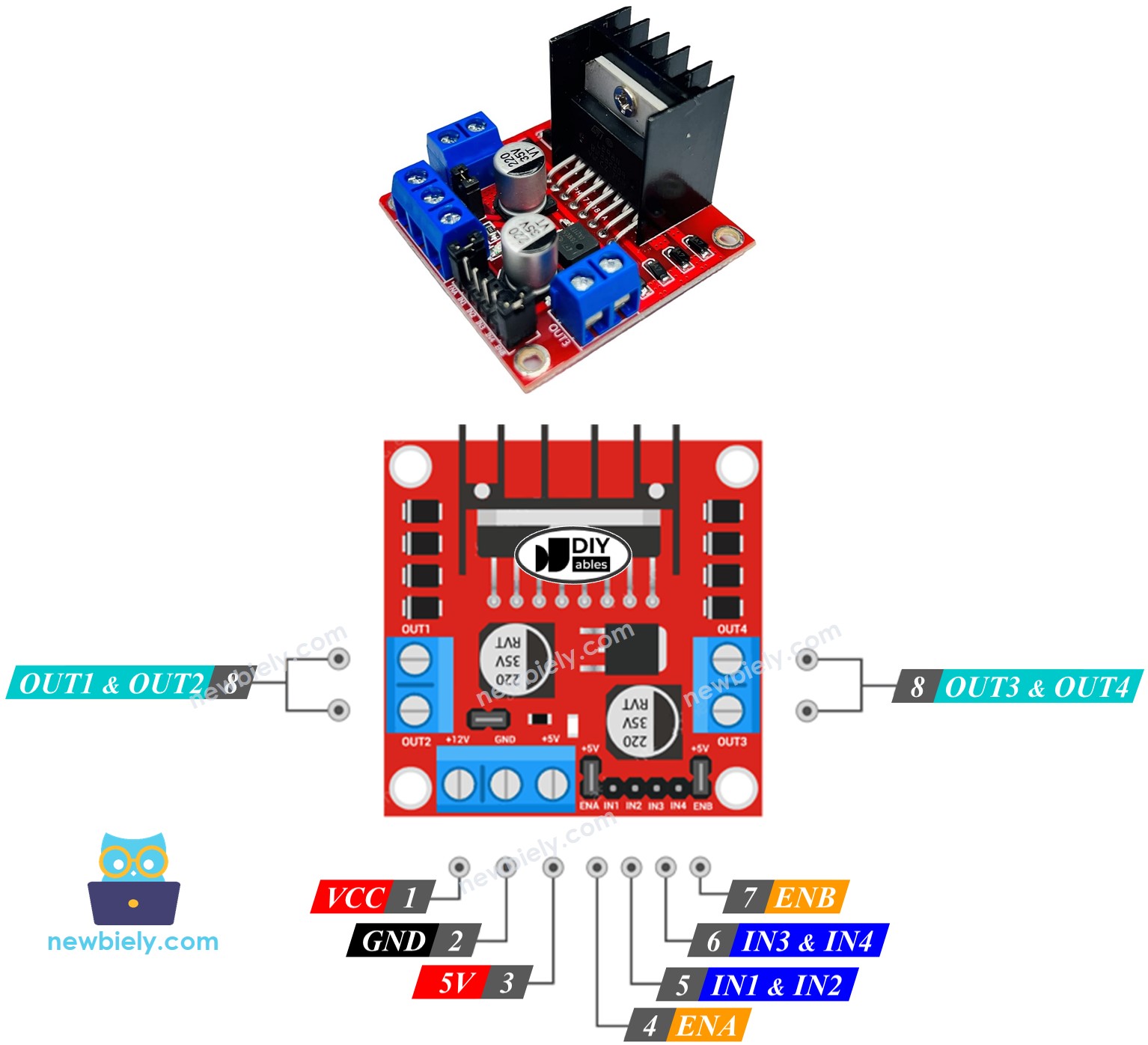Let’s face it, folks—IoT security is no longer optional. With the rise of smart devices, remote work setups, and interconnected systems, protecting your network has become a top priority. That’s where RemoteIoT firewall comes in. Whether you're a tech enthusiast or a business owner, understanding how RemoteIoT firewalls work can save you from potential cyber threats. So, buckle up because we’re diving deep into the world of securing IoT networks.
Now, you might be wondering, "What exactly is a RemoteIoT firewall?" Well, it’s like a digital bouncer for your IoT devices. It filters out unwanted traffic, blocks malicious attacks, and keeps your network safe and sound. In this tutorial, we’ll break down everything you need to know about RemoteIoT firewalls—what they are, why they matter, and how you can set one up.
Before we get started, let me give you a heads-up: this isn’t just another tech article. We’re going to keep it real, conversational, and packed with actionable tips. By the end of this guide, you’ll not only understand RemoteIoT firewalls but also feel confident enough to implement them in your own setup. Sound good? Let’s dive in!
- 23rd Of September Star Sign Unlocking The Secrets Of Libra Energy
- Billy Waugh Special Forces The Untold Story Of A Legendary Warrior
Table of Contents
- What is RemoteIoT Firewall?
- Why is RemoteIoT Firewall Important?
- How Does RemoteIoT Firewall Work?
- Step-by-Step RemoteIoT Firewall Setup Guide
- Common IoT Attacks and How RemoteIoT Firewall Prevents Them
- Benefits of Using RemoteIoT Firewall
- Top Tools for Implementing RemoteIoT Firewall
- Pro Tips for Maximizing RemoteIoT Firewall Efficiency
- Challenges in Implementing RemoteIoT Firewall
- Future Trends in IoT Security
What is RemoteIoT Firewall?
Alright, let’s start with the basics. A RemoteIoT firewall is essentially a security solution designed specifically for Internet of Things (IoT) networks. Think of it as a gatekeeper that monitors incoming and outgoing traffic to ensure only authorized data gets through. Unlike traditional firewalls, RemoteIoT firewalls are tailored to handle the unique challenges posed by IoT devices, such as limited processing power and diverse communication protocols.
Here’s the kicker: IoT devices are often seen as the weakest link in any network. They lack the robust security features found in desktop computers and servers, making them prime targets for hackers. That’s why having a RemoteIoT firewall in place is crucial—it acts as an additional layer of protection to safeguard your entire ecosystem.
Key Features of RemoteIoT Firewall
So, what makes a RemoteIoT firewall so special? Here are some key features:
- My Last Stroke Just Went Viral Song The Ultimate Deep Dive
- Is Actress Angie Dickinson Still Living The Untold Story
- Real-time threat detection
- Advanced traffic filtering
- Device-specific security rules
- Integration with cloud-based systems
- Automated updates and patches
These features make RemoteIoT firewalls an indispensable tool for anyone looking to secure their IoT network. But hey, don’t just take my word for it—let’s explore why they’re so important.
Why is RemoteIoT Firewall Important?
In today’s digital age, security breaches are becoming increasingly common. From ransomware attacks to data leaks, the risks are real and costly. That’s where RemoteIoT firewalls step in. They provide a much-needed shield against these threats, ensuring your IoT devices remain secure and functional.
Here’s a quick breakdown of why RemoteIoT firewalls matter:
- Prevents unauthorized access to your network
- Protects sensitive data from being stolen
- Reduces the risk of costly downtime
- Enhances overall network performance
- Complies with industry security standards
And let’s not forget the peace of mind that comes with knowing your network is well-protected. Whether you’re running a smart home or managing an enterprise-level IoT system, a RemoteIoT firewall is a must-have.
How Does RemoteIoT Firewall Work?
Now that we’ve established why RemoteIoT firewalls are important, let’s dive into how they actually work. At its core, a RemoteIoT firewall uses a combination of rules, algorithms, and machine learning to monitor and control network traffic. Here’s a simplified explanation:
Traffic Monitoring: The firewall continuously scans all incoming and outgoing data packets. It checks for any suspicious activity or unauthorized access attempts.
Rule-Based Filtering: Based on predefined rules, the firewall decides whether to allow or block certain types of traffic. These rules can be customized to suit your specific needs.
Advanced Threat Detection: Modern RemoteIoT firewalls employ cutting-edge technologies like AI and machine learning to identify and neutralize emerging threats in real-time.
Types of RemoteIoT Firewalls
Not all RemoteIoT firewalls are created equal. Depending on your requirements, you might choose from the following types:
- Hardware-based firewalls: Physical devices that sit between your network and the internet.
- Software-based firewalls: Programs installed on individual devices or servers.
- Cloud-based firewalls: Centralized solutions that offer scalability and ease of management.
Each type has its own advantages and disadvantages, so it’s important to choose the one that best fits your setup.
Step-by-Step RemoteIoT Firewall Setup Guide
Ready to set up your own RemoteIoT firewall? Follow these simple steps:
- Assess your network: Identify all the devices connected to your IoT network and determine their security needs.
- Choose the right firewall: Select a RemoteIoT firewall solution that aligns with your budget and requirements.
- Install the firewall: Follow the manufacturer’s instructions to install the firewall on your network.
- Configure settings: Set up custom rules and policies to ensure maximum protection.
- Test and monitor: Regularly check the firewall’s performance and make adjustments as needed.
Remember, setting up a firewall is just the beginning. To truly maximize its potential, you’ll need to keep it updated and maintained over time.
Common IoT Attacks and How RemoteIoT Firewall Prevents Them
Let’s talk about some of the most common IoT attacks and how RemoteIoT firewalls can help prevent them:
- DDoS Attacks: By limiting the amount of traffic allowed through the network, firewalls can mitigate the impact of Distributed Denial of Service (DDoS) attacks.
- Malware Infections: Firewalls can block malicious software from entering your network, keeping your devices safe from infection.
- Data Theft: With advanced encryption and access controls, firewalls ensure that sensitive information remains confidential.
By addressing these vulnerabilities, RemoteIoT firewalls play a vital role in maintaining the integrity of your IoT network.
Benefits of Using RemoteIoT Firewall
Still on the fence about whether you need a RemoteIoT firewall? Here are some compelling reasons to consider:
- Improved security: Protect your devices and data from cyber threats.
- Enhanced performance: Optimize network traffic for better overall performance.
- Scalability: Easily adapt to growing network demands without compromising security.
- Cost savings: Avoid the financial burden of dealing with security breaches.
These benefits make RemoteIoT firewalls an invaluable asset for anyone serious about IoT security.
Top Tools for Implementing RemoteIoT Firewall
When it comes to choosing the right tools for your RemoteIoT firewall, there are plenty of options available. Some popular choices include:
- pfSense: An open-source firewall that’s highly customizable and easy to use.
- Fortinet: A robust enterprise-level solution with advanced threat detection capabilities.
- Checkpoint: A comprehensive security platform that integrates seamlessly with IoT systems.
Each tool has its own strengths, so it’s important to evaluate them carefully before making a decision.
Pro Tips for Maximizing RemoteIoT Firewall Efficiency
Want to get the most out of your RemoteIoT firewall? Here are some pro tips:
- Regularly update your firewall software to ensure it has the latest security patches.
- Monitor network activity closely to detect and respond to potential threats quickly.
- Implement multi-factor authentication for added security.
- Conduct regular security audits to identify and address any vulnerabilities.
By following these tips, you’ll be well on your way to creating a secure and efficient IoT network.
Challenges in Implementing RemoteIoT Firewall
Of course, no solution is without its challenges. Some common obstacles you might face when implementing a RemoteIoT firewall include:
- Complex setup processes
- Compatibility issues with certain devices
- High costs associated with premium solutions
- Need for ongoing maintenance and updates
While these challenges can seem daunting, they’re certainly manageable with the right approach and resources.
Future Trends in IoT Security
As technology continues to evolve, so too does the field of IoT security. Some exciting trends to watch out for include:
- Increased adoption of AI-driven security solutions
- Development of more lightweight and efficient firewalls
- Greater emphasis on privacy and data protection
- Emergence of new standards and regulations for IoT security
Stay ahead of the curve by keeping an eye on these trends and incorporating them into your security strategy.
Conclusion
There you have it—a comprehensive guide to RemoteIoT firewalls. From understanding what they are to learning how to set them up, we’ve covered all the essentials. Remember, securing your IoT network isn’t just a nice-to-have—it’s a necessity in today’s digital landscape.
So, what are you waiting for? Take action now and protect your network with a reliable RemoteIoT firewall. And don’t forget to share this article with your friends and colleagues who might find it useful. Together, we can build a safer and more secure IoT ecosystem.
Got any questions or feedback? Drop a comment below, and let’s keep the conversation going!
- Tony Hinchliffe Wife The Love Story Behind The Football Legend
- Jake And Izzy The Ultimate Duo Making Waves In The Entertainment World


